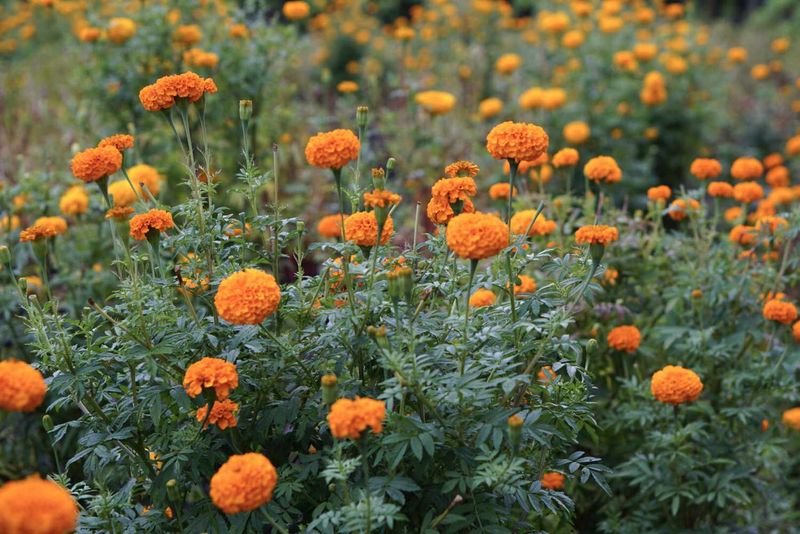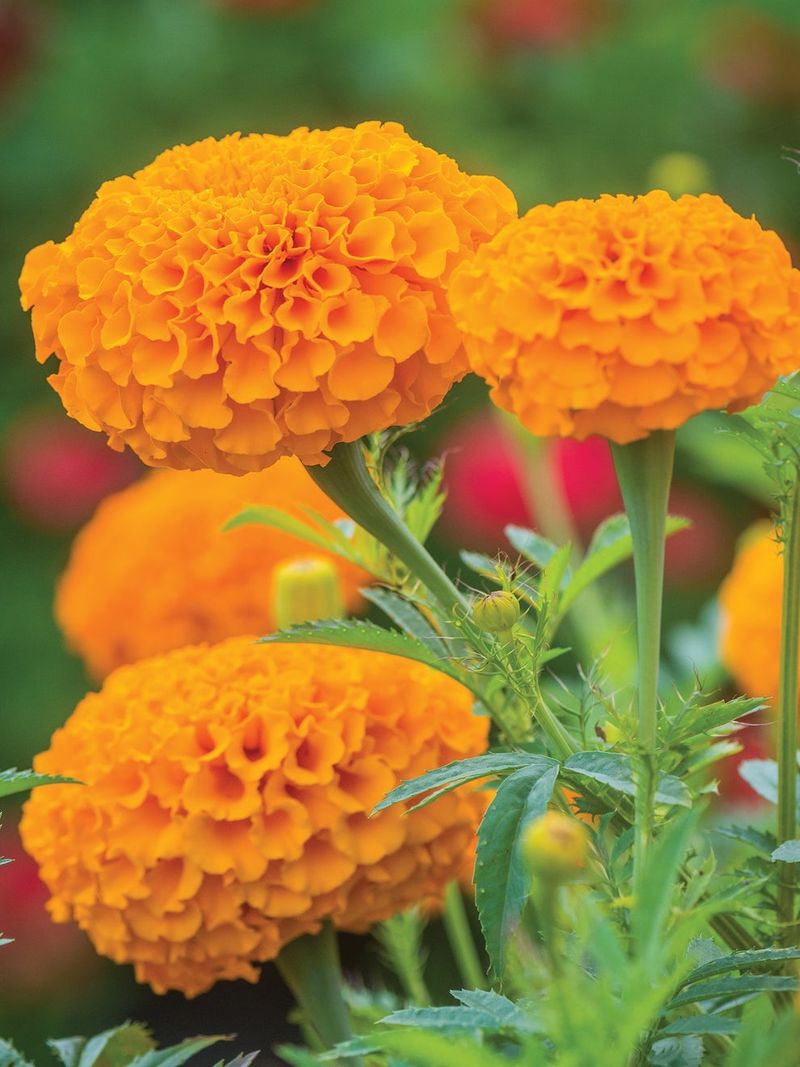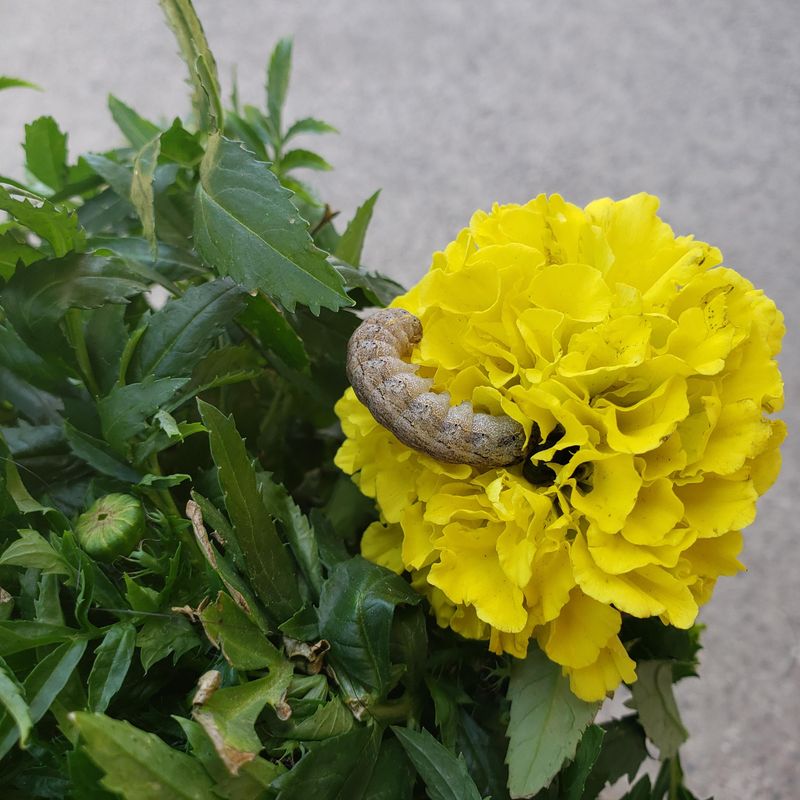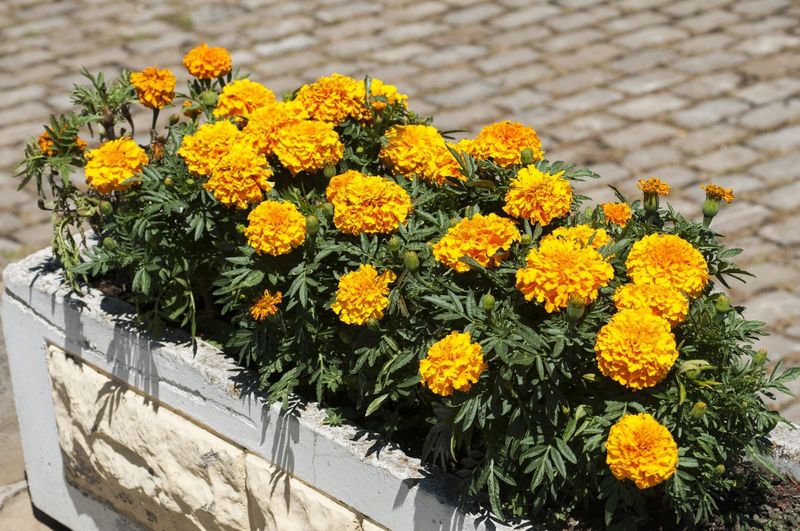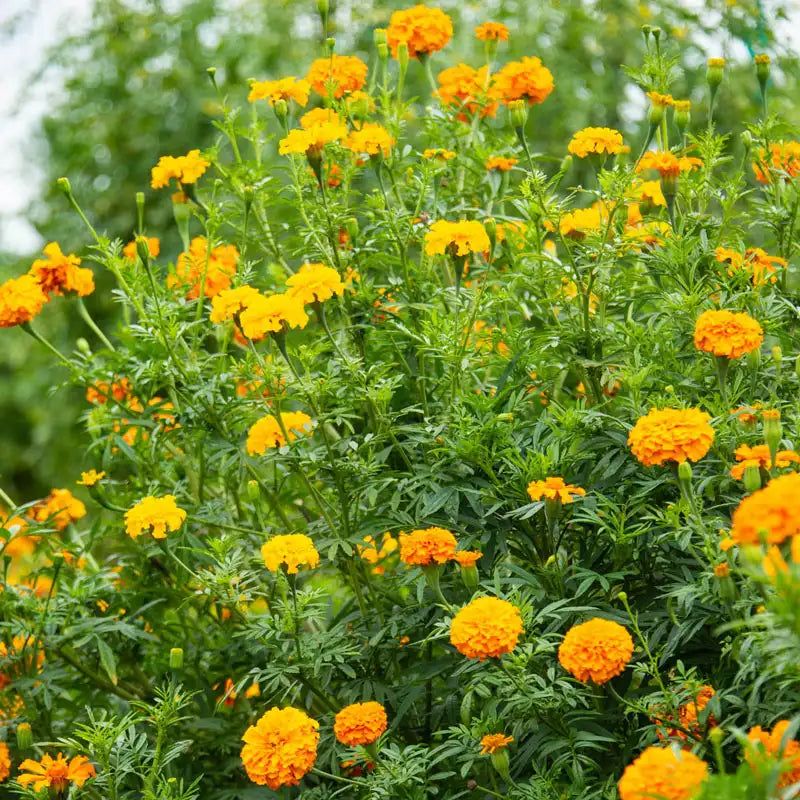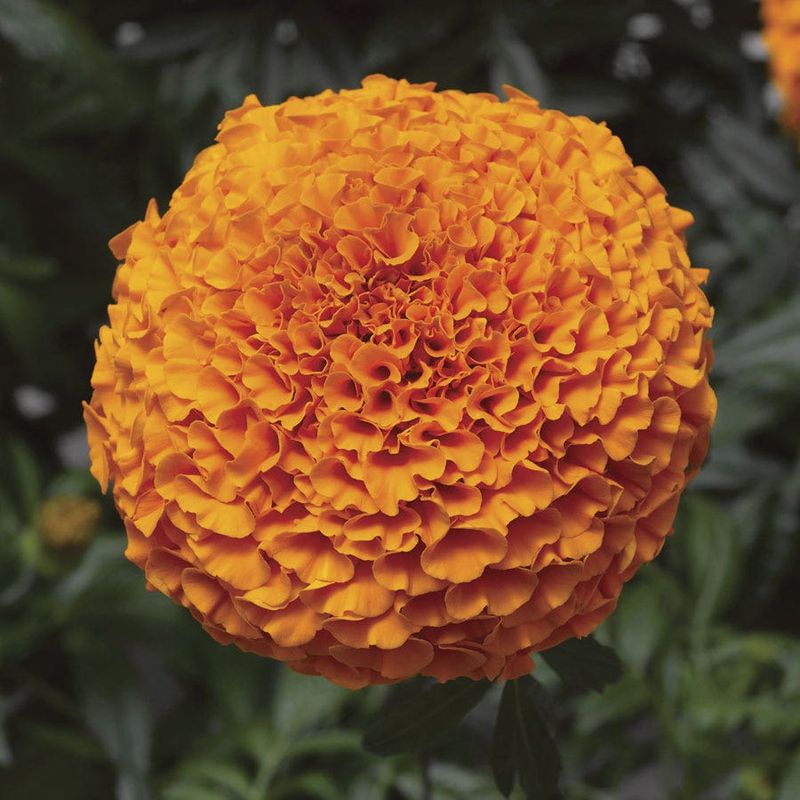Thinking about planting marigolds to brighten up your garden? I totally get it—they’re cheerful, easy to grow, and just seem to bring everything to life. But here’s the thing I wish someone had told me sooner: not all marigolds play nice with the rest of your garden.
It’s not that these marigolds are “bad,” but they might not be the right fit depending on your space, goals, or even your local climate.
So, before you grab that seed packet just because the photo looks pretty, it’s worth checking out this list of marigold varieties that might give you more hassle than happiness. Think of it as a little garden matchmaking—because the right marigolds can do wonders, but the wrong ones? Well, let’s just say I’ve learned that lesson the hard way.
1. African Marigolds (Tagetes Erecta)
Ever thought about how towering plants can cast shadows over your beloved veggies? African Marigolds are a prime example.
With their impressive heights, they could easily turn your sunny vegetable patch into a gloomy spot. I planted them once next to my peppers, and the difference in light was obvious within days.
While they’re beautiful in their own right, consider if they might overtake the rest of your garden. It might sound silly, but have you ever tried to reason with a plant? Let’s just say, they’re not great listeners.
2. Mexican Marigolds (Tagetes Lucida)
In areas where the sun blazes and rain is scarce, Mexican Marigolds can be a magnet for spider mites. Imagine these tiny invaders making themselves right at home.
Sure, the marigolds look charming, but are they worth the hassle of an infestation?
Mine ended up attracting more trouble than they solved. It’s like inviting uninvited guests to your garden party – not ideal!
3. French Dwarf Marigolds
Ever planted something expecting it to be a knight in shining armor against pests? French Dwarf Marigolds might let you down. Their smaller size limits their effectiveness in pest control compared to their larger cousins.
I planted them once, hoping for a mini army against garden foes. Spoiler: I had to call for reinforcements! They helped a bit, but I still needed stronger pest control. Lesson learned: size can matter.
4. Hybrid Marigolds With Heavy Blooms
Picture this: heavy blooms drooping under the weight of humidity. Hybrid Marigolds can turn from garden pride to a soggy mess in no time.
If you’re in a humid climate, you might be setting yourself up for disappointment. Watching your blooms rot away is like seeing your favorite cake collapse – heartbreaking and messy.
I ended up pruning them constantly just to keep things under control.
5. Fragrant-Free Marigolds
Think marigolds automatically mean pest control? Not so fast! Fragrant-Free Marigolds might look pretty but lack the punch to keep pests away.
Have you ever relied on a friend who didn’t show up? That’s how these marigolds feel in the pest department.
It’s a gamble whether they’ll do the job or just sit there, looking pretty. I tried them once, and pests didn’t seem to mind at all.
6. Marigolds Grown For Cut Flowers
Some marigolds are bred to be show-stoppers in a vase, not in the garden. While they might steal the spotlight indoors, don’t expect them to fend off garden enemies or thrive outside.
They seem pretty but are not functional! They looked great in a vase, but not much use in the garden.
So, choose wisely if you’re looking for both beauty and substance.
7. Double-Bloom Varieties
Double-Bloom Marigolds might look like they’re wearing a ball gown, but that layered beauty can keep pollinators at bay. It’s like offering a closed door at an open house – not exactly welcoming.
I once planted them hoping for a pollinator paradise, but it was more like an exclusive club with no entry.
Choose wisely if you want a buzzing garden! Mine didn’t get much attention from bees or anything else, really.
8. Marigolds In Pre-Fertilized Pots
Pre-fertilized pots sound convenient, right? But if your marigolds are too nutrient-packed, nearby sensitive edibles might suffer. It’s a bit like giving a child too much sugar – not always a good result.
Consider your garden neighbors before plopping those pots down.
Nobody wants unhappy veggies! I noticed my tomatoes started struggling after I placed these nearby.
9. Tagetes Tenuifolia (Signet Marigolds) In Sandy Soils
Bet on Tagetes Tenuifolia to thrive in light, sandy soil? They might just struggle without richer grounds. They’re like a gourmet diner finding only fast food options – not satisfied.
Expect signs of distress if they don’t get the nutrients they crave. It’s a reminder that not all marigolds are sand-friendly sunbathers. They barely grew until I changed the soil.
10. Compact Container Varieties
Compact container marigolds may sit pretty in pots, but don’t count on them for wide coverage. They’re stylish but not particularly useful. They didn’t do much for pest control in my raised beds.
If you’re aiming for a lush, pest-free garden bed, these little guys might not be up to the task. Trust me on this one!
11. Crackerjack Marigolds
With their stature and effective pest-repelling qualities, Crackerjack Marigolds are a garden favorite. They stand tall, almost like sentinels guarding your precious plants.
Consider them a reliable ally in the battle against garden pests. They might not be subtle, but they get the job done with flair. I rely on them every season and they haven’t let me down.
12. Nema-Gone Marigolds
Imagine a marigold that targets nematodes like a precision-guided missile. That’s Nema-Gone Marigolds for you.
I remember planting them and watching my garden thrive without those pesky nematodes. It was like having a secret weapon in my horticultural toolkit.
I noticed a real improvement in my soil health after planting them. A great choice if nematodes are your nemesis!
13. French Marigold ‘Bonanza’
French Marigold ‘Bonanza’ brings color and compactness to any veggie garden. They’re like the trusty sidekick who never lets you down.
While they don’t dominate the scene, they’re perfect for adding charm and keeping pests in check.
A delightful addition to any garden looking for a pop of color without the drama. They grew well and didn’t need much from me.
14. Tagetes Patula ‘Safari Mix’
If you want marigolds that laugh in the face of adversity, Tagetes Patula ‘Safari Mix’ is your go-to. They thrive across climates, bringing resilience and pest resistance to your garden.
Consider them the marathon runners of marigolds – they just keep going!
Perfect for gardeners wanting beauty without fuss. These are one of the few types I replant every year.
15. Tagetes Erecta ‘Inca II’
Tagetes Erecta ‘Inca II’ boasts impressive flowers and a scent that says ‘no thanks’ to insects. It’s like their way of saying, ‘keep away, bugs!’
Plant these if you want substantial blooms with a built-in defense against pests. They’ll ensure your garden is not only lovely but also cleverly protected. They’ve handled pests better than most other types I’ve tried.


